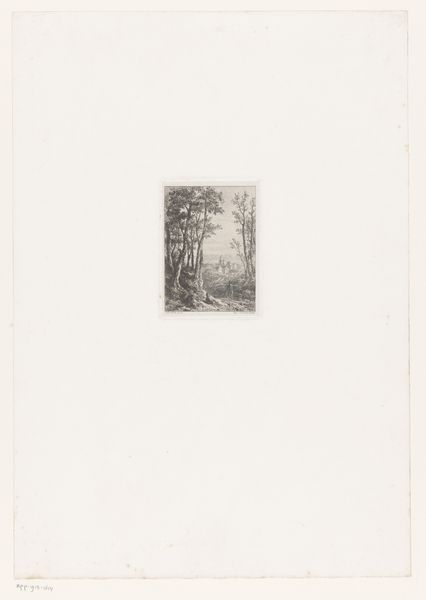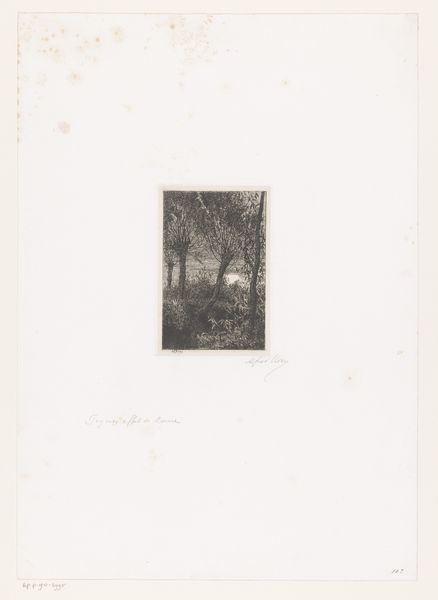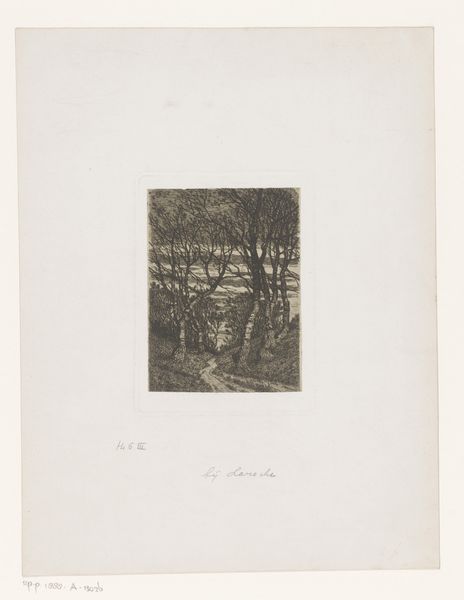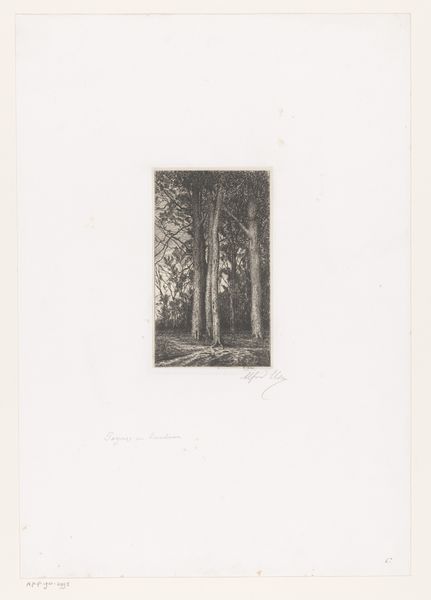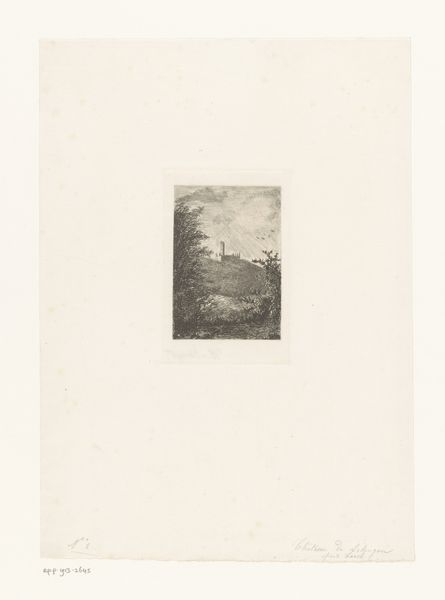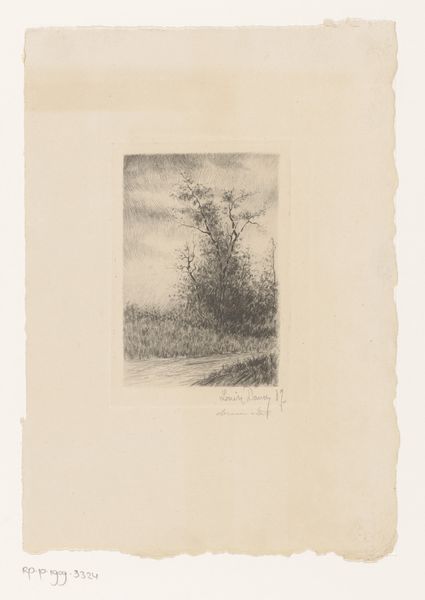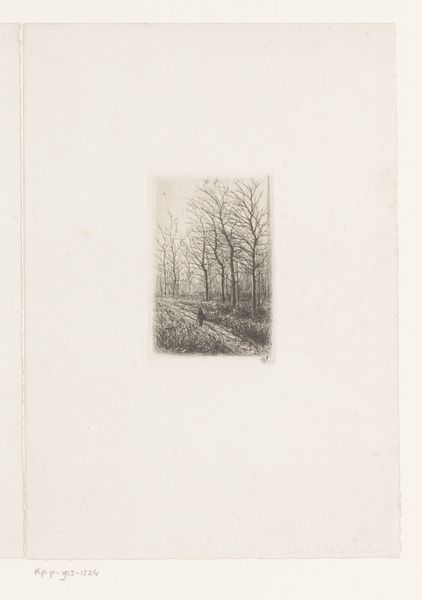
Dimensions: height 139 mm, width 80 mm
Copyright: Rijks Museum: Open Domain
Alfred Elsen made this landscape, Berglandschap met meer en bomen op de voorgrond, using etching, a printmaking technique, sometime between 1865 and 1914. With etching, a metal plate, usually copper, is coated with a waxy, acid-resistant substance called a ground. The artist then scratches an image into this ground, exposing the metal beneath. When the plate is immersed in acid, the exposed lines are eaten away, creating grooves. The deeper the grooves, the more ink they will hold. The plate is then inked, wiped clean, and pressed against a sheet of paper, transferring the image. The resulting print bears the marks of this alchemical process: the crisp, precise lines that capture the trees in the foreground and the distant hills. But it also bears the traces of labor. The artist's hand meticulously scoring the plate, the repetitive act of inking and printing. Etching was part of a broader printmaking culture, which democratized art production. Understanding the labor and process behind this seemingly simple image allows us to appreciate the ingenuity and effort involved, blurring the lines between art and craft.
Comments
No comments
Be the first to comment and join the conversation on the ultimate creative platform.
